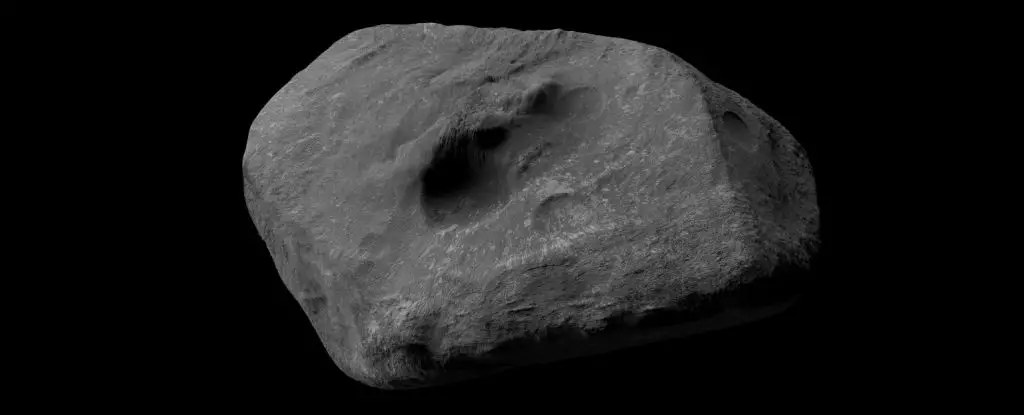On December 27, 2024, a celestial body captivated the attention of astronomers and casual sky-watchers alike. This body, dubbed asteroid 2024 YR4, seemed to emerge from the cosmic shadows, prompting excitement, intrigue, and a healthy dose of caution. While the initial reaction to its discovery raised alarms about potential impacts—an ever-present concern in planetary defense circles—the complexity underlying this asteroid’s origins offers a fascinating glimpse into the intricacies of our Solar System. This event serves as a reminder that the universe is full of surprises, presenting both opportunities for discovery and challenges for Earth’s inhabitants.
Tracing Its Origins: A Journey Through the Solar System
Unlike many asteroids that source their materials and trajectories from the outer edges of our Solar System or the more extensively studied trojan asteroids, 2024 YR4 has its roots in the central main asteroid belt, a region between Mars and Jupiter. This discovery sparked curiosity among scientists, as it runs counter to existing theories about the origins of Earth-threatening asteroids. Bryce Bolin, an astronomer from Eureka Scientific, expressed surprise at this revelation, emphasizing the rarity of such bodies originating from that particular area.
The role of Jupiter as a gravitational guardian is pivotal in understanding how 2024 YR4 found its way to our neck of the cosmic woods. Traditionally, Jupiter’s immense gravitational pull has been known to protect the inner Solar System from many hazardous objects. However, 2024 YR4 managed to slip through a gravitational loophole, serving as a reminder of the chaotic dynamics at play in our solar neighborhood. These movements underscore not only the unpredictability of celestial mechanics but also our need for vigilance in the face of potential cosmic threats.
A Close-Up Assessment
Upon discovery, astronomers employed advanced telescopes like the W.M. Keck and Gemini South to analyze the asteroid’s characteristics. The results were nothing short of illuminating. Measuring approximately 30 to 65 meters in diameter, 2024 YR4 bears a flattened, irregular shape reminiscent of a hockey puck. Its rotation period of just 20 minutes adds to the uniqueness of its profile and adds a layer of intrigue to the morphological studies that might follow.
What makes this analysis particularly groundbreaking is that understanding 2024 YR4’s composition can inform future planetary defense strategies. It is classified as an S-type asteroid, comprised predominantly of siliceous rock. This classification suggests it is denser than other types—specifically, carbonaceous asteroids, which may consist of looser, rubble-like structures. Such distinctions are vital for developing mitigation techniques in the event of a potential impact.
Risk Assessment and Scientific Implications
Initial concerns about 2024 YR4’s trajectory indicated a future close pass by Earth in 2032, which incited fears of a catastrophic impact. However, further analysis has significantly downgraded the likelihood of a direct hit, although the Moon remains a potential target, albeit with minimal risk. This nuanced understanding is crucial for refining impact assessment methods and developing effective response strategies.
Moreover, the very existence of 2024 YR4 challenges astronomers to broaden their assessments of other near-Earth objects and their origins. When assessing risk, knowledge of a body’s source is paramount. If more asteroids emerge from unexpected locales, the established models of orbital mechanics and population distributions may require adjustments.
The Bigger Picture of Planetary Defense
With so many unknowns, studying asteroids like 2024 YR4 plays a critical role in advancing planetary defense initiatives. Each new discovery informs not only our understanding of this particular object but also the broader landscape of threats lurking within our solar neighborhood. The prospect of a lasting impact—should one of these objects be on a collision course with Earth—makes the investigation into their origins not just academic but existential.
As Bolin articulates, understanding the structural integrity and formation of these celestial rocks informs how best to potentially divert or mitigate the impact of any that may pose a threat. The implications are clear: attention must turn to systematically observing and tracking these space rocks, harnessing technological advancements to potentially alter their dangerous trajectories should they approach Earth.
Opportunities for research motivated by discoveries like that of asteroid 2024 YR4 remind humanity of its need for cooperation and diligence in the collective quest for cosmic survival. As we gaze skyward, the necessity of further exploration and enhanced detection systems becomes increasingly evident. With each discovery, humanity inches closer to mastering the unpredictability of its celestial neighbors.


Leave a Reply